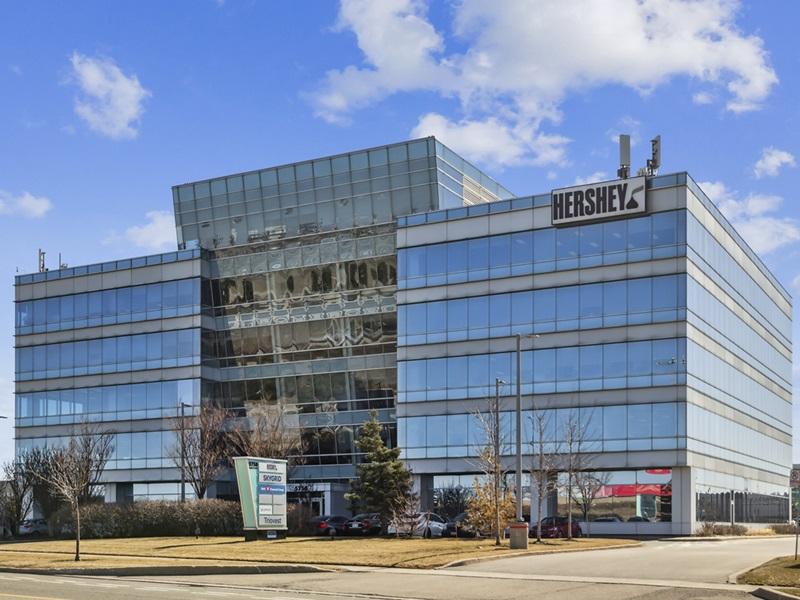
The 15-minute neighbourhood concept has created a buzz in urban planning circles over the past few years and is the basis for the new RE/MAX Canada report, 15-Minute Neighbourhood: Lessons for Small Communities.
The concept involves creating enclaves where local residents can access their basic day-to-day needs within a 15-minute walk, bicycle or public transit ride. To discuss the report, RE/MAX hosted a June 20 discussion moderated by CivicAction CEO Leslie Woo.
Both are part of RE/MAX’s efforts to ease Canada’s housing crisis by advocating for building the right supply of housing for the greatest number of Canadians in a way that delivers maximum livability and affordability — particularly in smaller municipalities that are experiencing rapid growth.
“This has to be an ongoing theme, an ongoing topic that not only RE/MAX but Canadian society in general has to be involved in as we continue to move forward and look at the housing crisis that we're in across this country,” RE/MAX Canada executive vice-president Elton Ash said during the discussion at Toronto’s Space On King.
“And that's at all three levels, whether that's basic shelter, purpose-built rentals or fee-simple ownership. This is a crisis that truly has to be addressed and that we'll continue to work on.”
The report’s recommendations
Among the recommendations included in the report are:
• adding diversity along with densification through the addition of high-rise, mid-rise and semi-detached housing;
• offering a mix of housing styles in each neighbourhood, including market housing, subsidized housing, mixed-income housing and co-ops;
• providing both hard and soft infrastructure to allow communities to thrive and for quality of life to flourish;
• transforming empty or under-utilized commercial, retail and parking spaces into residential dwellings, which can be accelerated by governments expanding zoning laws and incentivizing developers; and
• adding bike lanes to all major streets, implementing fast and accessible public transportation, and building walking paths and sidewalks throughout neighbourhoods.
“Are we just going to continue to build sprawling neighbourhoods where you are dependent on your car?” asked RE/MAX Canada president Christopher Alexander.
“I think that would be a huge missed opportunity, especially when we're trying to encourage people to move across the country.
“There are other city centres in Canada that have an opportunity to build more purpose-built types of inventory that suits a variety of different needs.”
Alexander said parking in urban centres can be difficult and expensive, and streets clogged with cars due to volume and construction projects are a major headache.
He stressed the importance of public transit availability and accessibility, and making communities more pedestrian- and bicycle-friendly.
Survey accompanies report
According to a Leger survey commissioned by RE/MAX as part of the report, 48 per cent of respondents agreed the 15-minute neighbourhood concept is achievable and feasible.
Seventy-two per cent of respondents agreed reducing commuting time to 15 minutes or less for work, appointments, child care, restaurants, entertainment, shopping and other necessities would improve their quality of life.
“We have to talk not just about the costs of the housing units, whether we purchase or rent them, but the cost of life,” urban designer, city-building advocate and author Ken Greenberg said.
“One of the great advantages of the 15-minute city is access to day care, access to the community centre and being able to walk to buy your groceries. Having all those things close at hand actually makes life more affordable.”
Greenberg said many small and medium-sized towns and cities grew out of having main streets offering a variety of services that were surrounded by residential communities.
Most new residential and retail development in these places, however, is taking place on the fringes in sprawling, auto-oriented suburbs. Greenberg said this, in turn, is making main streets less viable.
“If we do infill developments, we strengthen those existing communities and we use the parking lots as a place for redevelopment,” Greenberg said.
Many large malls in the suburban areas surrounding Toronto are being intensified and turned into mixed-use communities where people can also live and work.
The panelists believe there’s a need for more of that type of redevelopment and repurposing unused office space to play roles in creating viable 15-minute neighbourhoods.
More government involvement called for
Greenberg said it was crucial for governments to again become involved with building new affordable rental housing along with the private sector and incorporating some form of inclusionary zoning regulations to get it done.
He said successful housing projects were built with government involvement in Toronto, Vancouver, Montreal and other cities in the 1970s and ‘80s.
“Then we walked away from it and we fell into this pathology that in an advanced industrial society like Canada, with the commodification of housing as a financial asset, that somehow by building more and more housing, we would somehow get to trickle-down affordability.
"That doesn't work for any significant portion of the population.”
Governments must also step up to provide social infrastructure such as schools, community centres and daycare facilities for local residents early in the development cycle, Greenberg added.
Environmental aspects have to be considered
Fifty-four per cent of survey respondents agreed the 15-minute neighbourhood would help Canada reach its climate goals.
“As we continue to have this discussion and future discussions about how Canadian communities should be developed, in my opinion, resilience to extreme weather events needs to be incorporated,” Intact Centre on Climate Adaptation director of climate finance and science Kathryn Bakos said.
“Building resilience into building design needs to be a very important part of that discussion.”
Bakos said the property casualty insurance sector is a good indicator of what’s happening in the housing market regarding extreme weather events.
She said there were $3.1 billion worth of insurable losses due to extreme weather events in 2020 and the rule of thumb is that three to four times that amount is uninsurable losses which are paid for out of pocket by individuals, businesses and governments.
Bakos noted 10 per cent of the Canadian housing market is uninsurable for flood risk, according to the Insurance Bureau of Canada.
Her organization did a quantitative analysis showing homes in flooded communities sold for 8.2 per cent less than those in non-flooded areas.
Bakos said there are areas that may initially look good for building affordable housing, but if proper resilience measures aren’t in place, those communities could become more costly to build and maintain in the long run.
Canada already has “well-informed standards, guidelines and tools to be deployed into new and existing communities” to make them more resilient, Bakos said. They just have to be deployed.
There’s a need to prepare in advance for extreme weather events and build adaptivity and resilience into communities, Bakos said.
“For every dollar of adaptation that we put into place over a 10-year period, we save $3 to $8,” Bakos said. “So that opportunity cost gets lost when an extreme weather event happens and we're not properly adapted.
“We have to put money towards fixing people's homes and roads and bridges and schools and hospitals.
"If we become a proactive society and build resilience within our communities, over a 10-year period we can save $3 to $8 and that funding can be used for initiatives within our communities.”
“I think there are enormous economic advantages and sustainability advantages,” Greenberg said of 15-minute neighbourhoods.
“It always comes back to using what we have more resourcefully.”










